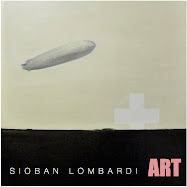
The end of the year, and surely the end of the decade, brings about a plethora of obligatory “Top Ten” lists. Why not dive right in? Below is my Aesthetic Top Eleven list for 2009 – in alphabetical not preferential order.
Compass in Hand: Selections from The Judith Rothschild Foundation Contemporary Drawings Collection at The Museum of Modern Art, New York. On exhibit are more than three hundred drawings from this vast collection. Included are gestural, figurative, conceptual and systems based works. One gets to view drawings of established masters such as Donald Judd and Joseph Beuys, while viewing contemporary European works by Kai Althoff, Neo Rausch and Francis Alÿs. There was almost too much to take in and the show required more than one visit. The collection demonstrates why drawings, both as tools and end products, remain relevant.
Fred Sandback at David Zwirner, deftly demonstrated the late artist’s acute sense of the phenomenology of space and volume. The illusion of these qualities was remarkably created with the lowliest of materials, and its most minimal employment: acrylic yarn.
Martin Kippenberger, The Problem Perspective at The Museum of Modern Art, New York. Kippenberger lived fast and hard and died young from liver cancer at the age of 44. This did not however, diminish his prolific, varied and fearless output. I walked away with the sense that I shouldn’t think too much about what I am doing, but rather “do” and let the thinking follow.
Mat Lombardi, Guitar Quartets. My only non-visual entry and please forgive the nepotism. I felt that I was hearing something I shouldn’t hear; experiencing something beyond my realm; and knowing something a human shouldn’t know. Profound.
Michaël Borremans, Taking Turns at David Zwirner, New York. The Europeans aren’t afraid of employing representational and figurative art to describe an ambiguity. Borremans does just that. I respond to his paint and his iconography.
Pierre Bonnard, The Late Interiors at the Metropolitan Museum of Art, New York. Every experienced painter that I’ve recently heard speak has referenced Bonnard. I can understand why. His ability to meld color, light, form, material, abstraction, figuration and symbolism was astounding. I wanted to lick the paint right off of the canvases.
Raoul De Keyser , Terminus: Drawings (1979-1982) and Recent Paintings at David Zwirner the small and modest abstract paintings made clear that the artist was definitely looking at or thinking of something when he painted them. The beautifully installed show was refreshing amidst the spectacle that is the first opening night of the autumn season in Chelsea.
Ree Morton: At the Still Point of the Turning World at The Drawing Center, New York. Avoiding the tropes so typically found in the works of many of her fellow feminist contemporaries, Morton’s work remains fresh today more than thirty years after her death. It demonstrates that she was part of this world, not just commenting on it.
Robert Frank, The Americans at the Metropolitan Museum of Art, New York. It articulated the way I think and changed the way I see.
Song Dong, Projects 90 at The Museum of Modern Art, New York. If you have suffered the loss of one parent and observed the grief of the surviving one, this installation, based on the Chinese concept of wu jin qi yong, or "waste not” consists of the complete contents of Dong’s mother’s home, amassed over fifty years. The artist collaborated with her, assembling and organizing the contents after his father’s death. It poignantly demonstrated all of the sadness, humor, impatience, compassion and lunacy that punctuate such an experience.
The Lindy & Edwin Bergman Collection of Joseph Cornell’s boxes at the Modern Wing of the Art Institute of Chicago. Finally, one can regularly view the important and comprehensive collection of 38 boxes, where, within each, dreams are made manifest.




























